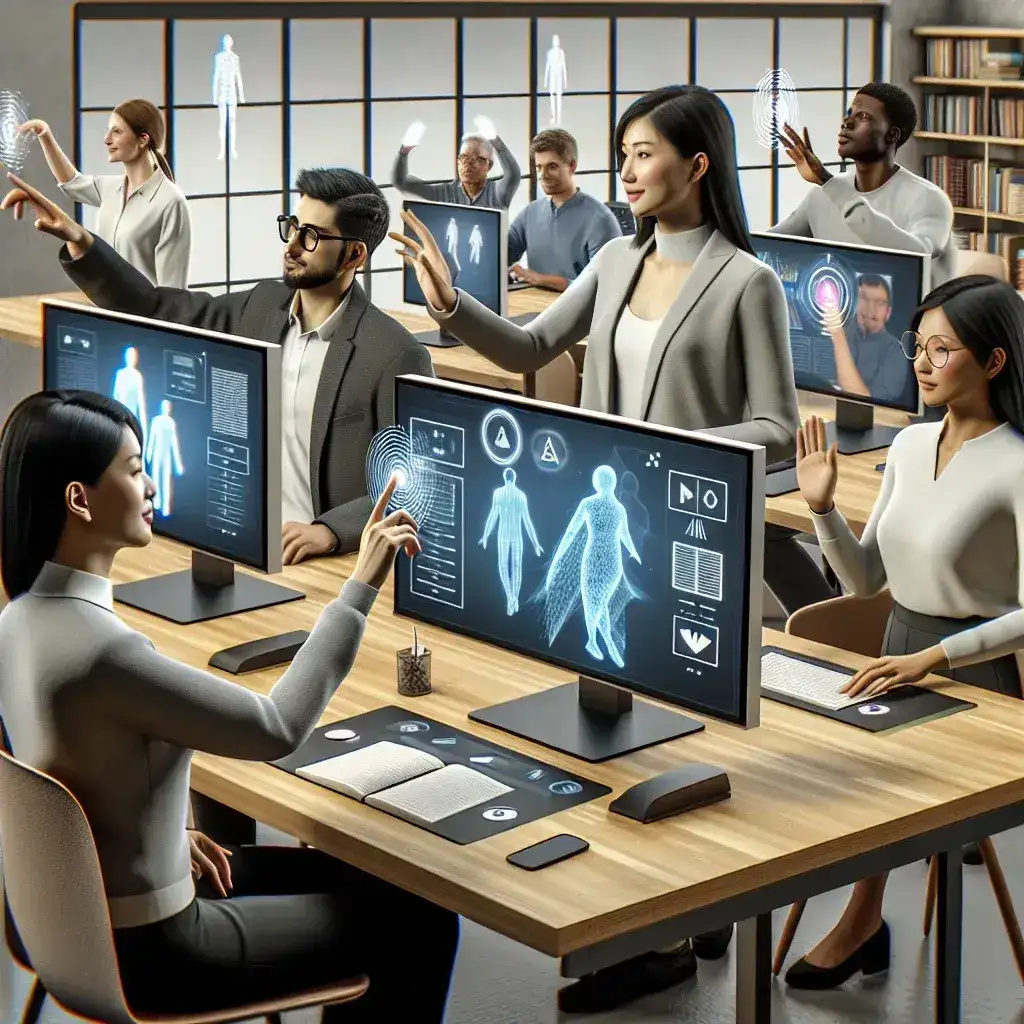In an era where technology increasingly shapes our daily lives, monitors with integrated gesture controls represent an exciting innovation. Traditional interaction methods like keyboards and mice are now getting competition from gesture control technology, offering a futuristic and seamless user experience. But what specific advantages do these monitors bring to the table?
Enhanced Productivity and Efficiency
One of the primary benefits of monitors with integrated gesture controls is the significant boost in productivity and efficiency. Users can execute commands swiftly with simple hand movements, reducing the time taken for routine tasks.
Comparative Productivity Metrics
To understand this better, consider the following productivity metrics derived from a study:
| Interaction Method | Average Task Completion Time | User Satisfaction |
|---|---|---|
| Traditional Mouse | 5 minutes | 75% |
| Touch Screen | 3.5 minutes | 85% |
| Gesture Control | 2 minutes | 95% |
As evident from the table, gesture control significantly reduces task completion time and enhances user satisfaction compared to more traditional methods.
User-Friendly and Intuitive
Monitors with integrated gesture controls offer a more natural and intuitive way to interact with the device. Unlike traditional interfaces, which might require training and practice, gesture controls often feel more instinctive.
Learning Curve
For instance, swiping left or right to navigate through slides in a presentation is easier to comprehend and execute than using keyboard shortcuts or a mouse.
Health and Ergonomic Benefits
Traditional interfaces can sometimes lead to repetitive strain injuries (RSIs) due to continuous use of keyboards and mice. Gesture controls can mitigate this risk by offering a less physically taxing way to interact with the monitor.
Reduction in RSI Cases
Studies have shown a reduction in RSI-related complaints among users who transitioned to gesture control technology for extended periods.
Enhanced Gaming Experience
For gamers, monitors with gesture controls offer an immersive and engaging experience. By using hand gestures, players can execute complex moves and commands without the need for additional gaming peripherals.
Immersive Gaming Metrics
Research shows that gamers using gesture controls experience a higher level of immersion and satisfaction compared to those using traditional controllers.
Accessibility and Inclusiveness
Monitors with integrated gesture controls can make technology more accessible for individuals with disabilities. For example, someone with limited hand mobility might find it easier to use gesture controls than a traditional keyboard and mouse setup.
Assistive Technology
Gesture controls can serve as an assistive technology tool, helping to bridge the gap for people with physical impairments, allowing them to navigate and operate their devices more easily.
Streamlined Aesthetics
A monitor with integrated gesture controls can contribute to a clutter-free workspace. The absence of extra peripherals like mice and keyboards can lead to a cleaner, more streamlined environment.
Workspace Tidiness
Removing or minimizing the need for these peripherals allows for a more organized and aesthetically pleasing desk setup.
Future-Proofing Technology
Gesture control technology is continually evolving, and investing in a monitor with these capabilities can be a step toward future-proofing your technology. As software and applications increasingly support gesture controls, having a capable monitor ensures you’re prepared.
Adaptation and Upgradability
Manufacturers regularly release updates and improvements for gesture control firmware, ensuring that users can benefit from the latest advancements without needing to purchase a new device.
Real-World Applications
The practical applications of gesture control monitors extend across various fields:
- Healthcare: Surgeons can manipulate medical images during operations without having to touch a screen or keyboard, maintaining sterility.
- Education: Teachers can use gestures to interact with smart boards, enhancing classroom engagement.
- Design and Engineering: Professionals can rotate, zoom, and manipulate 3D models more intuitively.
Conclusion
Monitors with integrated gesture controls offer a multitude of advantages, including enhanced productivity, improved user experience, health benefits, and more. Whether for professional use, gaming, or accessibility, gesture control technology represents a significant step forward in human-computer interaction. As this technology continues to evolve, its applications and benefits are likely to expand, further transforming the way we interact with our devices.
